Project ideas and inspiration from Good magazine
How many hours of our lives will we spend with our head in cupboards? Transform the inside of your humble storage spaces and you’ll be happy to delve into them in future.
Built-in or freestanding, cupboards are an asset in any home. Move into a house with too few of them, and you’ll feel their absence just as soon as you start opening boxes and looking for places to put things away. The cupboard is the friend of the hoarder and the lover of clear surfaces – it enables you to impose a certain order while stashing things away for later.
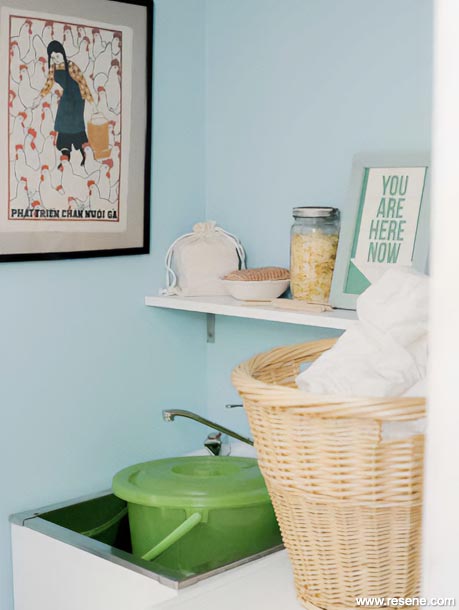
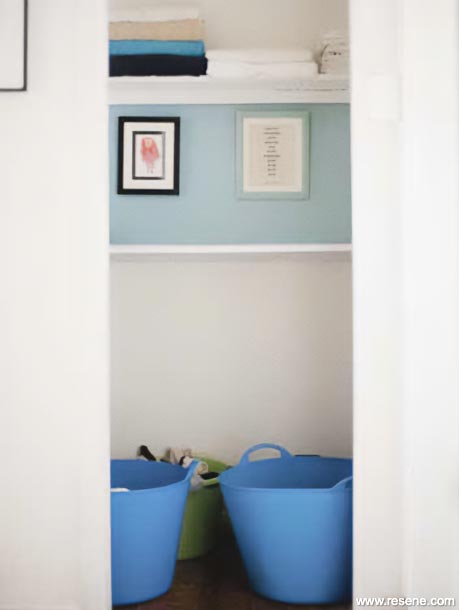
Given the secret life of things, and the inexplicable tendency for stored stuff to proliferate when we’re not paying attention to it, the inside world of our cupboards can benefit from a little care and attention. Spring is the perfect time to clear them out, discover long-lost items and set their newly sorted contents straight. Think of it this way: given how many hours of our lives we’ll likely spend with our head inside a cupboard looking for things, why not strive to make the insides as pleasant as possible?
There are lots of simple ways to transform otherwise humble cupboards. Do you have access to a bay tree? Hang a few fresh leaves inside your pantry or wardrobe for a pleasant aroma and to help ward off moths. Line the insides of your wardrobe with artful combinations of paint and paper. Opening cupboard doors and seeing a pop of colour or pattern gives you a little reward – and the bigger the cupboard, the greater the creative possibilities. See www.good.net.nz/wardrobe for more.

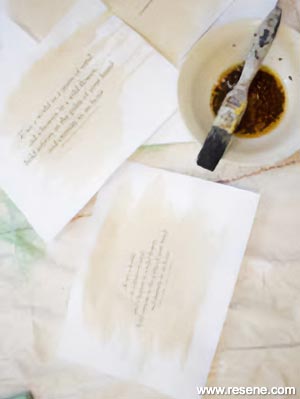

Thanks to recent home renovations I now, for the first time in my adult life, have a dedicated indoor laundry – albeit in a glorified cupboard. It’s goodbye to putting on the washing in the corner of the bathroom or, back when our washing machine was under the house, having slugs crawl over the washing basket. And no more sharing the laundry space with dusty, greasy tools, either.
Now we live in a household of young adults and half-grown children, I’ve resolved my days of putting away other people’s clean washing are behind me – all thanks to my new laundry-sorting cupboard.
I don’t mind folding washing: there’s something quite satisfying about a neat pile of crisp, white sheets or washing line-fresh nappies, and the mindless nature of folding is positively therapeutic combined with chatting on the phone or listening to podcasts. The thing I loathe is putting away the washing – or worse, not putting it away and having to ignore tottering piles of socks and undies left to languish for days on the sofa. Because no one enjoys the failed laundromat look in the lounge.
The laundry-sorting cupboard is changing all that. It’s not huge – just over a metre wide – but has shelves and a bench just big enough to separate clean washing into various baskets for collection by their rightful owners. Smaller baskets facilitate advanced sock sorting and other mysteries that turn up in the wash.
Panels are painted in soothing blue and there are framed pictures to make me smile, plus inspirational quotes for lofty thoughts. Freshly painted and decorated, the laundry-sorting cupboard transforms an eyesore and an irritating weekly chore into a vortex of zen.
When we shifted to our current house, one of the things that appealed to me was the large-ish cupboard under the stairs. Never mind that it was long, thin and poorly lit. We laughed when the previous owners told us their name for it was the ‘cupboard of doom’. Surely not that handy-looking space, ideal for stashing away the vacuum cleaner, mop, spare lightbulbs, extension cords, candles, picnic basket, old video camera and that broken toaster we’ll definitely fix one day?
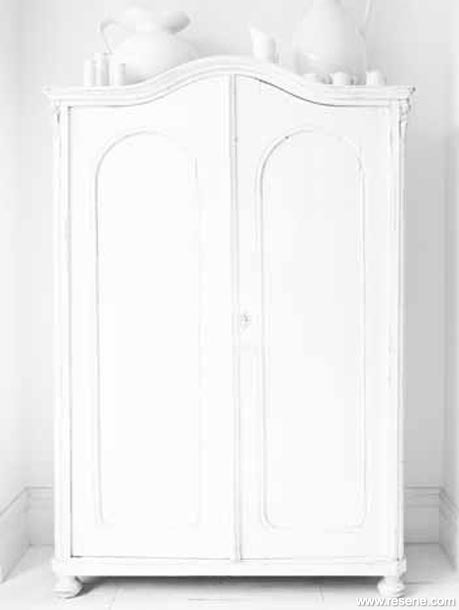
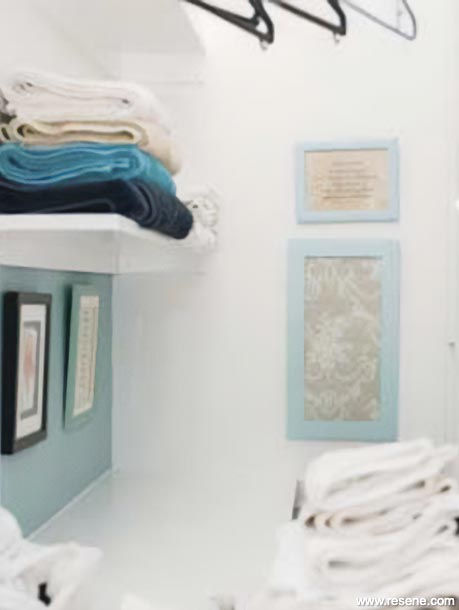
Funnily enough, the cupboard of doom stayed true to its name and our things also started to disappear into its gloomy depths. One day we’ll drag everything out and give this space the radical makeover it deserves. Meanwhile, the habit of naming cupboards has caught on. There’s the ‘philosophical cupboard’ in the kitchen, which is deeper than you think, and upstairs is the ‘Narnia cupboard’, which we all know is really nothing more than a door opening into a dusty but otherwise harmless attic space.
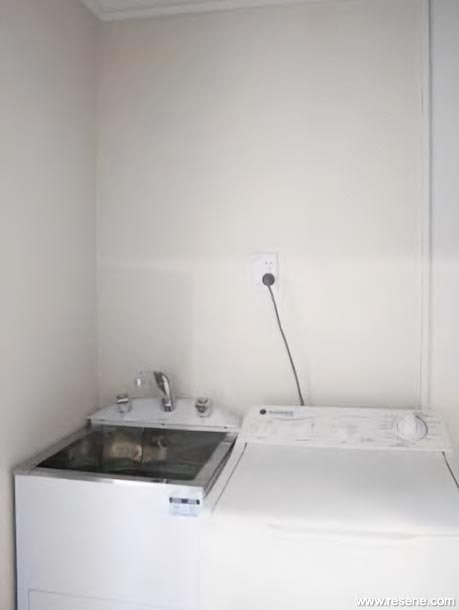
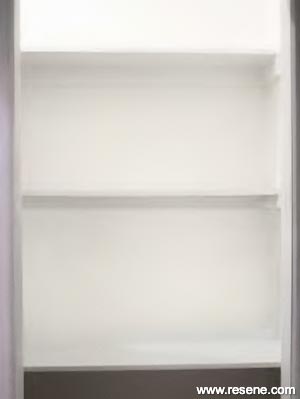
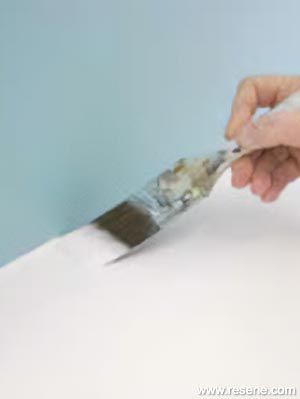
Step 1 Prepare walls for painting: fill any imperfections with bog, lightly sanding once it is dry. Check surfaces are smooth and dust free.
Step 2 When painting freshly plastered walls, start with a coat of Resene Broadwall Waterborne Wallboard Sealer. To prepare old surfaces for painting, use Resene Sureseal Pigmented Sealer.
Step 3 Give walls an even covering using Resene Zylone Sheen waterborne low sheen in a neutral shade of your choice.
Step 4 Choose a wall or panel, a paint colour and get stuck in. Start by cutting in, and work inwards using a mini roller.
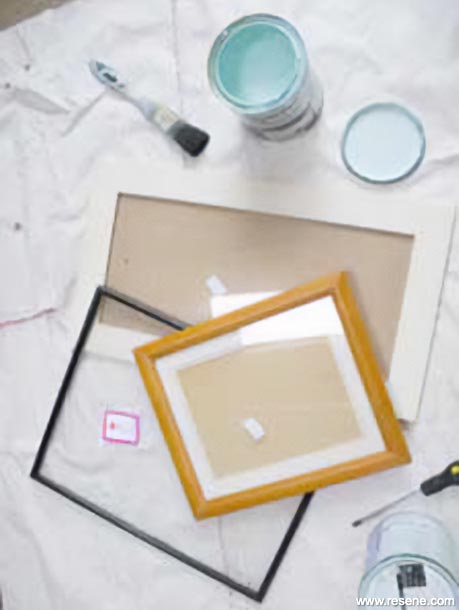
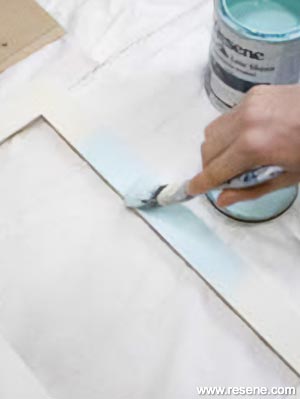
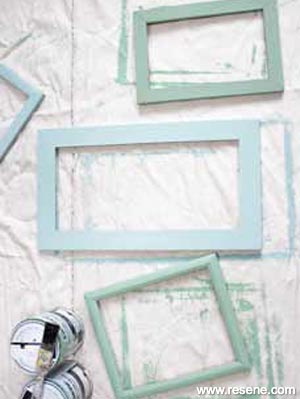
Words and styling Sarah Heeringa. Portrait Amanda Reelick. 2014
Good magazine projects
Wanting to tackle a project at your place but only have a weekend to spare? Get inspired with these projects from Good magazine. Reclaim and upcycle with paint.